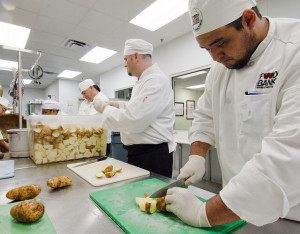
Food nourishes your body, but it also has an unfortunate side effect: it also nourishes germs, parasites, viruses, toxins, and bacteria. According to the U.S. National Library of Medicine, food poisoning occurs most often at picnics, school cafeterias, large social functions, and restaurants. Food poisoning commonly occurs 2-6 hours after eating or drinking contaminated food.
Symptoms of food poisoning include:
• Stomach cramps
• Diarrhea
• Fever and chills
• Headaches
• Nausea and vomiting
• Weakness
Yikes! Those things are not what you want for yourself, your family, or your friends. The effects of food poisoning go beyond discomfort. In some cases, food poisoning may even be fatal! We’re sure you’ve heard about bacteria like E. coli, Salmonella, Listeria, and Norovirus. These dangerous microbes are the result of mishandled food preparation or food that contacts waste during production.
In this post, we’ll share several things you can do to avoid food poisoning. You may or may not do these things already, so let’s find out:
Where Germs Hide in Your Kitchen
While we’re sure you keep a clean kitchen, there are places that easily go unnoticed and unattended to—and it’s not your floor, microwave keypad, or flatware storage tray.
According to a 2013 study by The Public Health and Safety Organization, the most common places where germs grow in the kitchen are the following places:
1. Refrigerator water dispensers
2. Rubber spatulas
3. Blenders
4. Refrigerator vegetable compartments
5. Refrigerator ice dispensers
6. Refrigerator meat compartments (see a pattern here?)
7. Knife blocks
8. Rubber seals of food storage containers
9. Can openers
10. Refrigerator insulating seals
Be honest: how many of those top 10 things do you attend to? And if you do, how often? If you’re not cleaning them on a regular basis, you’re inviting unwanted, deadly germs and bacteria to grow in your home!
Even after taking a quick look at the list above, you’ll notice over half the items above in the refrigerator. Do you know why that is? It’s because germs prefer to grow in damp and dark environments. Your fridge also has many small nooks and crannies where germs hide. While you may wipe it down your refrigerator shelves with a rag or washcloth, it’s also important you sanitize them properly.
Other common areas for germs to build up is on accessories that require dissembling to clean, such as your blender or other automated kitchen devices. Often people simply clean the external parts of these tools—not the internal parts where germs build up and attach themselves to food.
One more thing to avoid is storing utensils before they dry. If you’re placing wet knives in a knife block or wet spoons in your kitchen drawer, you’re inviting germs to grow on your kitchenware. Remember: germs love dark and damp places.
Kitchen Cleaning Tips
Based on everything you now know about food poising and germ growth, here are some universal germ and bacteria prevention tips:
• If it contacts food, clean it with warm and soapy water. This rule applies to everything food touches. If you can clean the storage area with water, do so at least once a month. This includes food storage trays, countertops, and microwaves. Commonly used items like cutting boards, utensils, and dishes should be cleaned with warm soapy water after each use.
• Allow cleaned objects to completely dry before storage. Don’t make the mistake of placing a dish or object in a dark place before it dries. Doing so allows germs to grow and defeats the purpose of you cleaning it in the first place!
• To combat odors, use a baking soda solution. Baking soda is a wonderful deodorizer. To clean and remove smells from things you haven’t cleaned in a while, make a solution of 1 tablespoon of baking soda per 8 ounces of water.
Don’t let your kitchen get out of hand! Follow these tips above to ensure your kitchen stays clean. When you do, you’ll do your best to avoid bacteria growth and avoid food poisoning.
Stay healthy and safe, the natural way.
For more natural health and wellness tips, bookmark our blog and visit it regularly. Also, be sure to sign up for our free newsletter if you haven’t already, so you can get a monthly update on natural health advice and special offers from our office.

